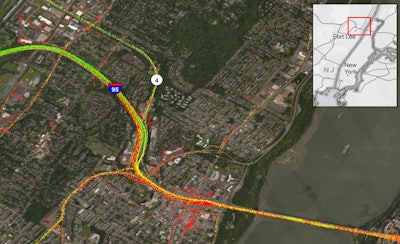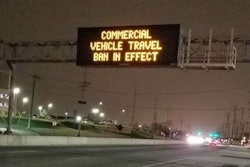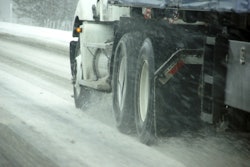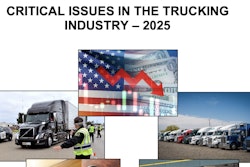
The American Transportation Research Institute today released its annual list of the most congested bottlenecks for trucks in America.
For the third year in a row, the intersection of Interstate 95 and State Route 4 in Fort Lee, New Jersey -- the approach to the George Washington Bridge into New York City and beyond -- is once again the worst bottleneck in the country.
The top 10 includes:
- Fort Lee, New Jersey: I-95 and SR 4
- Cincinnati: I-71 at I-75
- Atlanta: I-285 at I-85 (North)
- Atlanta: I-20 at I-285 (West)
- Houston: I-45 at I-69/US 59
- Chicago: I-290 at I-90/I-94
- Chattanooga, Tennessee: I-75 at I-24
- St. Louis: I-64/I-55 at I-44
- Rye, New York: I-95 at I-287
- San Bernardino, California: I-10 at I-15
“While everyone else sheltered in place in 2020, trucks kept rolling, delivering essential goods to communities large and small,” said CRST International President and CEO Hugh Ekberg. “Unfortunately, congestion continues to impact our operations and affect our drivers’ ability to deliver for America.”
The 2021 Top Truck Bottleneck List measures the level of truck-involved congestion at over 300 locations on the national highway system. The analysis is based on GPS data from over 1 million trucks. The bottleneck locations detailed in this latest ATRI list represent the top 100 congested locations, but ATRI monitors more than 300 freight-critical locations.
ATRI’s analysis, which used data from 2020, found that while there were COVID-related impacts on traffic across the country as car drivers stayed at home, the year was not without severe congestion. Average truck speeds at a fourth of the bottlenecks on ATRI’s list were 45 MPH or less, reflecting both a return to pre-pandemic freight demand throughout the year and the impact of numerous roadway construction projects in 2020.
“For decades, ATA has been sounding the alarm about how the condition of our highways is contributing to congestion – which slows down commerce, contributes to pollution and reduces safety," said American Trucking Associations President and CEO Chris Spear. "ATRI’s bottleneck report highlights where our most critical issues are and should be a guide for policymakers at the state and federal level. The cost of doing nothing is always higher than the cost of fixing these problems and we cannot wait any longer to address this mounting crisis.”
For access to the full report, including detailed information on each of the 100 top congested locations, visit ATRI’s website at TruckingResearch.org.










